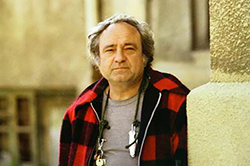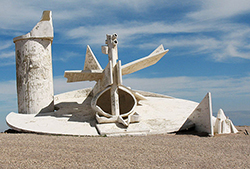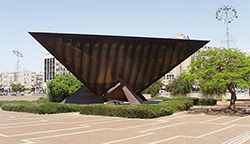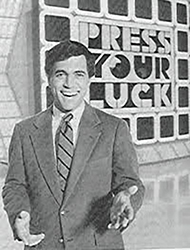Tomarkin Family
Click on Photos to Enlarge
#tmrkn-1:
#tmrkn-2:
#tmrkn-3
#tmrkn-4
#tmrkn-5
#tmrkn-6
#tmrkn-7
#tmrkn-8
#tmrkn-9
#tmrkn-10
#tmrkn-11
Igael Tumarkin (Hebrew: ???? ???????; 23 October 1933 – 12 August 2021) was an Israeli painter and sculptor.[1]
Biography]
Peter Martin Gregor Heinrich Hellberg (later Igael Tumarkin) was born in 1933 in Dresden, Saxony, Germany. His father, Martin Hellberg, was a German theater actor and director, and a son of a pastor. His Jewish mother, Berta Gurevitch, and his stepfather, Herzl Tumarkin, immigrated to then British Mandate of Palestine (now Israel) when he was two.[2]
Tumarkin served in the Israeli Navy. After completing his military service, he studied sculpture in Ein Hod, a village of artists near Mount Carmel, under Rudi Lehmann. His youngest son is the actor Yon Tumarkin.[3][4] Tumarkin died at the age of 87 on 12 August 2021.[5][6]
Art career[edit]

Igael Tumarkin, 1980
Among Tumarkin's best known works are the Holocaust and Revival memorial in Rabin Square, Tel Aviv and his sculptures commemorate fallen soldiers in the Negev.[7]
Tumarkin was also an art theoretician and stage designer. In the 1950s, Tumarkin worked in East Berlin, Amsterdam, and Paris. Upon his return to Israel in 1961, he became a driving force behind the break from the charismatic monopoly of lyric abstraction there. Tumarkin created assemblages of found objects, generally with violent expressionist undertones and decidedly unlyrical color. His determination to "be different" influenced his younger Israeli colleagues. The furor generated around Tumarkin's works, such as the old pair of trousers stuck to one of his pictures, intensified the mystique surrounding him.[8][9][10] One of his controversial works is a pig wearing phylacteries (or tfilin, small boxes containing scriptures).[11]
Education[edit]
• 1954 – Studied with Rudi Lehmann, Ein-Hod[12]
• 1955 Studied with Bertolt Brecht, Berliner Ensemble, Berlin[13]
• 1955-57 Assistant to the designer Karl von Appen
Awards and recognition[edit]
• 1963 First Prize for Battle of Hulaykat Monument
• 1968 The Sandberg Prize for Israeli Art, Israel Museum, Jerusalem, Israel[14]
• 1968 First Prize for Memorial to Sailors, Haifa
• 1971 First Prize for Memorial for "Holocaust and Revival", Tel Aviv[14]
• 1978 First Prize in the Biennale for Drawing, Reike
• 1984 Award from the President of the Italian Republic
• 1985 Dizengoff Prize for Sculpture
• 1990 Guest of the Japan Foundation
• 1992 August Rodin Prize, The International Sculpture Competition of the Open Museum, Hakone, Japan, for his sculpture of the sign at the entrance to Auschwitz concentration camp Arbeit Macht Frei.
• 1997 Award of Excellence, the President of the Federal Republic of Germany
• 1998 Sussman Prize, Vienna
• 2004 Israel Prize for sculpture[15][16]
Outdoor and public art[edit]
Tumarkin created over 80 outdoor sculptures in Israel and around the world.

Monument in the Moav Outlook in Arad, Israel

Holocaust memorial sculpture in Tel Aviv
• 1962-68 "Panorama", concrete and steel, Arad, Israel
• 1962-69 "Age of Science", concrete and steel, Dimona
• 1963 "Vibrations A & B", concrete, Kiryat Yam and "Window to the Sea", concrete, Atlit
• 1964-65 "Monument for the Holocaust", concrete and steel, Nazareth
• 1966 "Peace Memorial", Hebron Road, Jerusalem
• 1967 “He Walked in the Fields”[13]
• 1968 Arad Observatory sculpture[13]
• 1968 "Big Chief", tank assemblage painted, Kiryat Shmona
• 1969-71 "War and Peace", steel and stone, Ramat Gan
• 1970 "Keystone Gate", painted steel, Jerusalem
• 1970 "Homage to Dürer, painted steel, Haifa
• 1971 "Homage to Jerusalem", Givat Shapira
• 1971 Sculpture Garden, 61 Weizmann Street, Holon
• 1971-75 "Monument to the Holocaust and Revival", corten and glass, Tel Aviv[13]
• 1972 "Happenings and Homage to Kepler", concrete and painted steel, Tel Aviv University, Tel Aviv; "Sundial Garden", concrete, Ashkelon; and "Monument to the Fallen", concrete painted white and steel, Jordan Valley[13]
• 1972-73 "Airport Monument", painted steel, Lod
• 1973 "Challenge to the Sun", Ramot Alon, Jerusalem
• 1986 "Chichen Itzma", Kiryat Menahem, Jerusalem
• 1986 Pisgat Zeev, Jerusalem
• 1989 Homage to Robert Capa, Pozoblanco, Spain
• 1989 La Liberte, Bordeaux, France
• 1991 Bertolt Brecht, Berlin Museum Garden
• 1992 "Jerusalem – Three Faiths", Mount Scopus, Jerusalem
• 1993 Semaphore, Weizmann Institute of Science, Rehovot
• 1993 My Seven Pillars of Wisdom, Hakone Open Air Museum, Japan
• 1994–96 The Sculpture Garden of Belvoir (Kochav HaYarden)
• 1997 Memorial for Yitzhak Rabin, Ramat Gan Museum
• 2000 Abu Nabut Garden, Jaffa
See also[edit]
• List of Israel Prize recipients
• Visual arts in Israel
References[edit]
1 ^ Susan Tumarkin Goodman (1981). Artists of Israel, 1920-1980: the Jewish Museum/New York, February 19-May 17, 1981. Jewish Museum (New York, N.Y.). ISBN 9780814316863. Retrieved 27 August 2011.
2 ^ "Igael Tumarkin". www.jewishvirtuallibrary.org. Retrieved 5 March 2023.
3 ^ "Yon Tumarkin Biography". Imdb.com. Retrieved 21 January 2014.
4 ^ "Split. Personajes". boomerang.com.br. Archived from the original on 20 May 2014. Retrieved 21 June 2014.
5 ^ "Acclaimed and Controversial Israeli Sculptor Igael Tumarkin Dies at 87". The Algemeiner. Retrieved 13 August 2021.
6 ^ "Israel Prize winner, sculptor Tumarkin passed away at 87". The Jerusalem Post | Jpost.com. Retrieved 13 August 2021.
7 ^ Shlomo Sharan (2003). Israel and the Post-Zionists: a nation at risk. ISBN 9781903900529. Retrieved 27 August 2011.
8 ^ Rebecca L. Torstrick (2004). Culture and customs of Israel. ISBN 9780313320910. Retrieved 27 August 2011.
9 ^ Yair Mazor (2009). Who wrought the Bible?: unveiling the Bible's aesthetic secrets. ISBN 9780299228408. Retrieved 27 August 2011.
10 ^ Ronald Fuhrer (1998). Israeli painting: from post-Impressionism to post-Zionism. ISBN 9780879518226. Retrieved 27 August 2011.
11 ^ Harel, Israel (12 February 2004). "The Israel Prize for Divisiveness". Haaretz. Retrieved 29 February 2016.
12 ^ Arturo Schwarz (2001). Love at first sight: the Vera, Silvia, and Arturo Schwarz collection of Israeli art. Israel Museum. ISBN 9789652782649. Retrieved 27 August 2011.
13 ^ Jump up to:a b c d e "Sculptor Igael Tumarkin, a leading, controverisal [sic] voice in Israel's art world, dies at 87". Haaretz. Retrieved 13 August 2021.
14 ^ Jump up to:a b "Igael Tumarkin | British Museum". www.britishmuseum.org. Retrieved 13 August 2021.
15 cms.education.gov.il. Retrieved 5 March 2023.
16 cms.education.gov.il. Retrieved 5 March 2023.
Peter Tomarken was the original host of Press Your Luck.
Peter--
Tomarken was born in Olean, New York, the middle son of Barnett and Pearl Tomarken, who owned Dee's Jewelry store in Olean. His family was Jewish, members of Temple B'nai Israel. They relocated to Beverly Hills, California, in the early 1950s. Peter graduated from Beverly Hills High School in 1960 and from UCLA with a bachelor's degree in English. Before hosting game shows, he appeared as a contestant on The Rebus Game in the 1960s.[1]
After graduating from college, Tomarken married his first wife, Dana, who later served on the Beverly Hills Board of Education from 1985 to 1993. He and Dana had three children: Jason, and fraternal twin sisters, Alexis and Candace.
Tomarken worked on the magazines Women's Wear Daily and Business Week in New York City during the late 1960s before moving back to California to work at various advertising agencies. He made an appearance as a reporter in the 1978 film Heaven Can Wait, as well as the character Roe in "The Secret Empire" portion of the short lived NBC series Cliffhangers.
Game show career
He later started his own advertising firm, which put him behind and in front of the camera for many commercials in the late 1970s. His agent then suggested that he should try his hand at game-show hosting, to which Tomarken replied, "Why would I want to do that?" His agent said, "Because you work four days a month and get paid six figures!" After a pair of failed pilots for NBC — Rodeo Drive in October 1980 (later picked as a series for Lifetime in 1990, ten years later) and Duel in the Daytime in August 1981, both produced by Jay Wolpert — Tomarken got his first network job as host of Hit Man for NBC; it lasted just 13 weeks, from January 3 to April 1 of 1983. He also co-anchored a newsmagazine show on Playboy TV called Playboy on the Scene. Tomarken was then offered the hosting job for Press Your Luck, which he hosted for three seasons on CBS from 1983 to 1986. He also co-produced and co-wrote the 1984 NBC special Those Wonderful TV Game Shows.
Tomarken then hosted the pilot for Wordplay in October 1986 with announcer Rod Roddy, but Tom Kennedy hosted and Charlie O'Donnell announced the series. Next he hosted the short-lived Bargain Hunters for ABC during the summer of 1987. After a year hiatus, he returned to host Wipeout (which he also produced), which ran in syndication for one season (1988–89).
Tomarken's next project was a pilot for a game-show adaptation of the board game Monopoly, which was produced by Merv Griffin and intended to air daily in syndication. Tomarken (and stations) balked at the use of a midget to portray "Rich Uncle Pennybags", making it impossible to sell.[2] The project was reworked into a summer replacement weekly series for ABC in 1990; Tomarken was replaced by Mike Reilly, a contestant on the pilot, and "Rich Uncle Pennybags" was removed. He hosted several other unsold pilots, including TKO for Mark Goodson, Two Heads Are Better Than One and Live Wire for PYL producer Bill Carruthers, Winds of Fortune, and Show Me the World before the game show market stalled in the early 1990s.
Tomarken then turned to working behind the scenes as a producer and writer. He joined the staff of ABC's America's Funniest People as a segment producer for one season in 1991. He also wrote and produced episodes for Real Stories of the Highway Patrol. He returned to the game-show arena in 1994 when he was hired by the fledgling GSN during its conception and early years in the mid-to-late 1990s, and served as host for their evening interactive telephone games, Prime Games, which featured Decades and Race for the Numbers. In 2000, Tomarken took his final hosting position on the Fox Family Channel game show Paranoia. He also appeared on several infomercials and acted in small roles, including on the TV show Ally McBeal, during that time. He semi-retired from television to work as a real estate agent.
When GSN decided to revive Tomarken's most successful series as Whammy! The All-New Press Your Luck, Tomarken taped a pilot episode.[3] Todd Newton (who also hosted a pilot) was eventually selected to host the revival.
In 2003, Tomarken returned to GSN to participate in a documentary based on Michael Larson's run on Press Your Luck in 1984. He narrated the program, titled Big Bucks: The Press Your Luck Scandal, and also gave his own take on the event.[4] As part of the special, he hosted a segment of Whammy! The All-New Press Your Luck which reunited the two contestants who competed against Michael Larson with Larson's brother, James, for a grudge match; James won, with a total of $6,695. (Michael Larson had died in February 1999 of throat cancer).
Death
Tomarken—a private pilot—and his second wife, Kathleen (born June 12, 1964), were killed when his Beechcraft Bonanza A36, N16JR, crashed a few hundred feet offshore in Santa Monica Bay during climb-out from the Santa Monica Airport in California on the morning of March 13, 2006.[5] The aircraft lost power shortly after takeoff and Tomarken attempted to turn back to the airport before crashing into the bay. The National Transportation Safety Board determined that the Tomarkens' chances of survival "would have significantly increased" had the plane been equipped with shoulder harnesses in addition to lap seat belts.[6] The cause of the crash was determined to be an improper repair to the aircraft engine that resulted in a complete loss of power.[6]
The Tomarkens were volunteers with Angel Flight West, a nonprofit organization that provides free air transportation to needy medical patients. They were en route to San Diego to pick up a cancer patient who needed transportation to UCLA Medical Center for treatment when their airplane crashed. The charity and the Tomarken children have since established a "Tomarken Heroes" fund in memory of the couple.[7]
Tomarken and his wife are buried in the same plot at Hillside Memorial Park Cemetery in Culver City, California.
